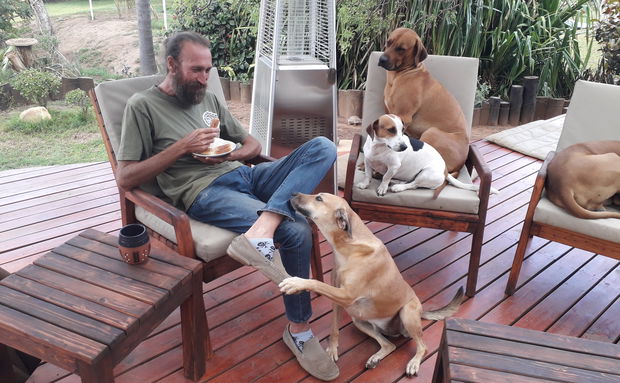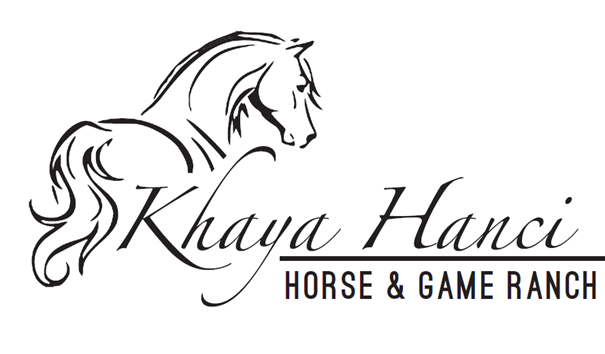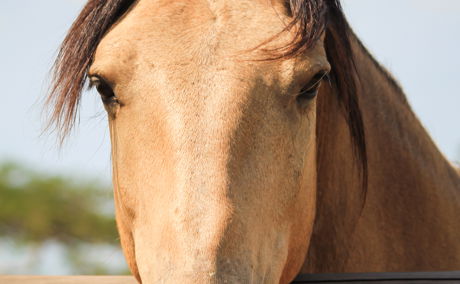A recent study by the University of Arizona, in conjunction with the HeartMath Institute, have uncovered some surprising details about what happens to our hearts when we interact with horses, and the potential benefits to our well-being.
A Course In Horse

A wonderful review from Robin De Roubaix (South Africa) - A must-read!!!
Khaya Hanci is an equestrian lodge, nestled right at the foot of Moholoholo – “The Big Big One” – the towering 1800m behemoth that also goes by Mariepskop.
The logo says it all – it’s all about the horses – and that is what the proprietors, Jürgen and Uli, will tell you in all German frankness (historically sensitive word combination aside – you know what I mean). That no-nonsenseness also implies a lack of snobbishness that I have (correctly or incorrectly) associated with equestrian circles, and being just a human feels like it’s good enough.
Khaya Hanci is every bit as efficiently functional as you would expect from this internationally experienced team. You will find riding classes, trail rides, impeccable accommodation. But what I didn’t expect is that naming it in terms of the “what” and not the “how”, is missing the point altogether. Because the “how” is pure love.
Now, defining love is beyond the ambit of this and all other texts imaginable. But when it is lacking it is all too apparent and when it is there, it is pretty much everywhere you look. At Khaya Hanci it is everywhere you look.
The first thing you see when you arrive are a number of neat paddocks with beautiful horses grazing, peacefully. Of course, I am assuming that you have processed your mountain-tableau induced gobsmacked stupor by the time you have arrived at the lodge. *Snap-snap* you can get back to that. That never really goes away. But paddocks, horses and then dogs and more ridgeback dogs with lolling tongues and wagging tails greet you with an unconditional “Welcome!” Once the playful barking settles, you may hear the sound of wild birds and parrots and maybe even a plumed “hello” from an African Grey in the aviary.
You may have visited such a place before. A place to free your inner Dr. Doolittle. A place for furry cuddles. But here is why Khaya Hanci is special – most of the dogs and most of the horses have been rescued. Rescued from hairy situations that will make you want to cry if you care about animals – the stories attest to the many who do not <tear emoji><angry emoji><confused emoji>. But despite the stories, these animals and their present condition – their outright frickin’ joy – are a testament to an exemplary depth of patience, compassion and care. The hand of the Mother.
I’m here as a sort of “apprentice horse whisperer”. Yesterday a group of four new horses arrived that have experienced various levels of trauma. The animals were bought at an auction in a bid to secure mercy for them against the tide (an euphemism). They are a handful in a sea of neglected and abused horses across this largely rural country. My job is to be present (in the fullest sense of the word), and to be a compassionate human that hangs around so that they can experience that for the first time.
I am told that the two foals (one really young – four months maybe?) will adapt faster to human contact as a prelude to more intensive care and human and herd bonding. The two older ones will take longer, and are more skittish. I don’t really even want to know why.
The horses did not come from a single place, have no prior relation, and so there are assertions of dominance that will also be a part of the process. The best I can do is to check for cues and try at least to shield the smaller ones. In some sense, I have been rescued too, so my horse buddies and I are getting along, but eye to eye will take time. I am therefore very relieved that Uli has framed the objective at “months”, which stops me from trying to be an overachiever, pushing too hard, and then failing, as one does. Wisdom personified.
I’m a raw recruit, and Uli felt that I would be able to act calmly around these particular horses. It’s true that I am an animal lover and that most animals feel comfortable around me. However, my exposure to horses has been minimal and a childhood experience had left me a bit unsure about the equestrian species.
My cousin had a pony, and once on vacation and visiting her, she arranged some horses for a trot around the paddock for my brother and I. I was given her pony to ride and the little chestnut mare didn’t like me – or so it seemed – and it seemed that way because she threw me off twice, and on the second chuck, I had to roll under a fence away from maliciously descending hooves. Fun.
I realized with time, by speaking to better riders, that it was probably not personal, but that my lack of training and experience had possibly upset her. My hands were too high. My heels too hard on the ribs. And I’ll give her that. But ixnay on the illingmekay, OK, orseyhay? Sensitive much?
Forward to today and my equestrian professors are Uli and Anna, both of whom speak and understand the wordless and ancient Animal Language with native fluidity. What they know can’t be expressed in words, only observed – and careful observation at that. Body language, breathing, intent, relative vectors of motion, careful eye contact – to do it well is to be a method actor. No faking. The only way is to become that person that an abused horse can trust. And that is a very composed person.
I didn’t quite think about that before I started, so all I can say is “you got me Nature!” and get with the program. Our program. To calm the horses I have to become really calm myself. And let go of that little childhood fear. And so, paradoxically, the taming of the beast has become the taming of the man. And if I read the Lotus Sutra right, the tamer of both man and beast is the Buddha, and the Buddha is always the most chilled guy in the room. Or paddock. Zen mind it is then.
The reason why I am even here is the compassion that is implicit in the method that Khaya Hanci employs in rehabilitating these gorgeous and sensitive animals. My four compadrés, under normal-to-better circumstances, would go to a horse trainer that would take charge of the horse to “turn it around” as fast as possible. Normal-to-worse is the abattoir. If “better” turns to “worse” or even “not so sure” then it’s also the abattoir. Killer success/failure metrics. Horses most often are business, and the sooner the horse is rideable, the sooner it has value. A horse has practically no value if untrained. So therefore, most trainers employ a strict and quite brutal regime to essentially bully the horse into accepting a bridle, then saddle, then rider.
It is not that most trainers want to lasso horses, forcefully restrain, shout or domineer, but there is simply no economical timeframe to allow for the horse’s true personality to emerge before becoming a tool, an object, equipment and therefore, money. And that is because horses cost money to feed and maintain. Quite a lot in fact: real estate, feed, veterinarians, medicine and other regular expenses add up to princely sums.
So Khaya Hanci could well be forgiven for taking the “boot camp” approach to training horses, but Jürgen, Uli and Anna know that that would compromise the core quality that they seek. Happy horses. Nothing tangible or measurable with tape – just a calmness in the eye, nostrils that are not flared, ears up and wide, but not up and “prickly”. Only such a horse is ready and confident to take a stranger for a ride through a wildlife reserve with buffaloes, giraffes and other more predatory surprises. This approach is no mean feat, but the intractable way that things are done. Soul-motivated non-violence and keine sheise about it.
Of course, instead of weeks this method could, and usually does, take months and even years. If this were mining (which was my dad’s trade), then instead of blasting a rock face with explosives, you sift through the sand on the stream bed to pick out little pecks of gold. The pure and priceless gold of personality, of willfulness, of playfulness. A method that is artisanal rather than industrial. Magical. And as nervously twitching muscles relax and breathing slows and deepens, so the life force begins to flow unfettered, at the pace of the Tao.
In a couple of days, this circle of compassion will feed back into humanity, as a group of 40 kids with cerebral palsy and other disabilities come here for their annual Christmas party. Then, some of these redeemed horses will be an anchor to Earth and Life, and a fountain of joy, for courageous children and moms from the Rethabile Centre in Acornhoek. A special day for special people, but not really all that unique, as all who come here experience a profound level of reconnection from these silent and wise creatures. Once here, once confident, the horses are in on the game to alleviate suffering. And this is probably why you have read up to here.
Lao Tzu wrote: “Nature doesn’t hurry, yet all things are accomplished”. At Khaya Hanci you will hear echoes of that in German, Parrot and various dialects of Dog. And if you have the “ears” to hear it, in a silent but harmonious chorus of Horse.
ACHTUNG! (Got your attention?): If you consider yourself to be a cowboy, or you get off on pushing others (people or animals) around, Khaya Hanci is not for you. Sorry, but really not sorry. The same wonderful maternal instinct that has patiently and self-sacrificially wrought this jewel of existence, will very suddenly and very severely turn Maa Kali on yo’ punk ass, and I for one, am not likely to chance that. However, if you really wish to connect, learn and grow your own being, then this is definitely the place, and definitely an unmissable experience.
If you have been wishing for a place that has a pervading atmosphere of kindness about it, I suggest you book now.
Further Reading
It is true that not everybody will be allowed to ride a member of the Khaya Hanci herd. We are very careful in picking prospective riders - for very good reasons. Read more about our philosophy!
We ruminate on the valorous partnerships between humans and horses in history, and how these have shaped our sense of humanity.


Share This Post